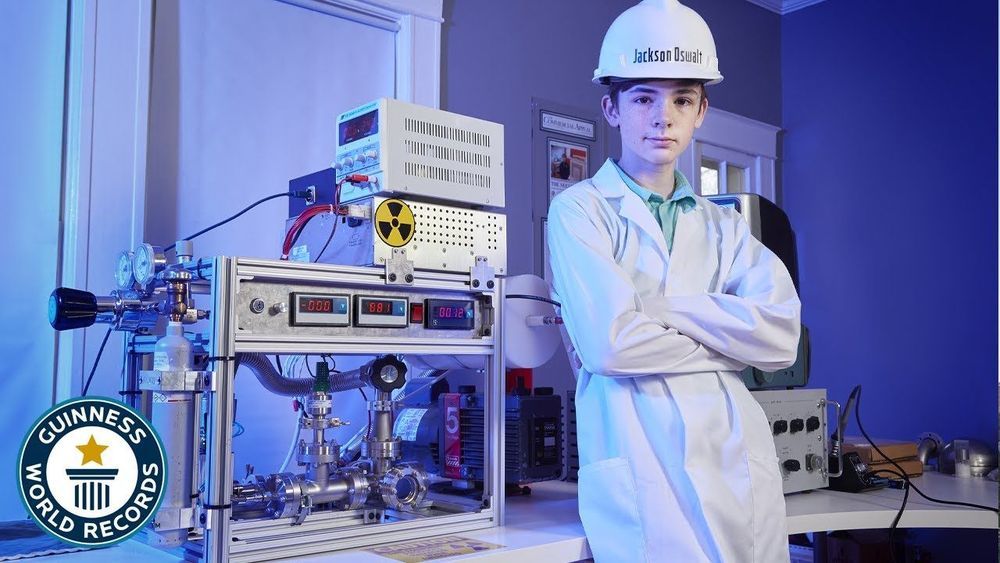Oct 7, 2020
Is “Peecycling” the Next Wave in Sustainable Living?
Posted by Quinn Sena in category: sustainability
Circa 2014
Human waste can be converted into valuable fertilizer, if people can get past the “ick” factor.
Circa 2014
Human waste can be converted into valuable fertilizer, if people can get past the “ick” factor.
Circa 2016
Scientists from a Belgian university have built a solar-powered machine that can turn urine into drinkable water. They deployed it at a 10-day music and theater festival in central Ghent, Belgium. The experiment was a success as the scientists were able to recover a 1,000 litres of unconsumed water, which will be used to make Belgian beer, from the urine of several partygoers.
The world’s sea floor is littered with an estimated 14 million tonnes of microplastics, broken down from the masses of rubbish entering the oceans every year, according to Australia’s national science agency.
The quantity of the tiny pollutants was 25 times greater than previous localised studies had shown, the agency said, calling it the first global estimate of sea-floor microplastics.
Researchers at the agency, known as CSIRO, used a robotic submarine to collect samples from sites up to 3,000 metres (9,850 feet) deep, off the South Australian coast.
Quantum mechanics arose in the 1920s, and since then scientists have disagreed on how best to interpret it. Many interpretations, including the Copenhagen interpretation presented by Niels Bohr and Werner Heisenberg, and in particular, von Neumann-Wigner interpretation, state that the consciousness of the person conducting the test affects its result. On the other hand, Karl Popper and Albert Einstein thought that an objective reality exists. Erwin Schrödinger put forward the famous thought experiment involving the fate of an unfortunate cat that aimed to describe the imperfections of quantum mechanics.
In their most recent article, Finnish civil servants Jussi Lindgren and Jukka Liukkonen, who study quantum mechanics in their free time, take a look at the uncertainty principle that was developed by Heisenberg in 1927. According to the traditional interpretation of the principle, location and momentum cannot be determined simultaneously to an arbitrary degree of precision, as the person conducting the measurement always affects the values.
However, in their study Lindgren and Liukkonen concluded that the correlation between a location and momentum, i.e., their relationship, is fixed. In other words, reality is an object that does not depend on the person measuring it. Lindgren and Liukkonen utilized stochastic dynamic optimization in their study. In their theory’s frame of reference, Heisenberg’s uncertainty principle is a manifestation of thermodynamic equilibrium, in which correlations of random variables do not vanish.
Although it’s clearly NOT the approach taken for ultracold vitrification of patients undergoing life extension cryonization. (ULTRA🥶COLD being the exact opposite of ULTRA-BLOODY-H🥵T, obviously!)
Still, given the vast number of scientific and engineering discoveries and creations born on the backs of unexpected results, accidental discoveries, and outright screw up, it might have very useful data that has practical applications that would never otherwise have even been considered.
Italian scientists found intact brain cells in a man who was killed during the eruption of Mount Vesuvius in 79 AD.

O,.o.
Hours before his 13th birthday, Jackson Oswalt (USA) fused together two deuterium atoms using a reactor he had built in the playroom of his family home in Memphis, Tennessee.
Continue reading “Middle school student achieved nuclear fusion in his family playroom” »
But in the upper levels, we tend to see the opposite, clockwise spin, which is called a ridge of high pressure. That key component above storms like Delta allows rising air to leave at the top of the storm and flow outward away from the center, known as a chimney effect. It operates like a vacuum and keeps a storm’s engine cycling.
But perhaps the most astonishing similarity to Wilma is Delta’s extremely small eye, which is only 4 miles across. Wilma had the smallest eye on record in the Atlantic — 2.3 miles in diameter. Meteorologists believe this is a key reason Wilma was able to become so strong, so fast.
The science is rather simple: The smaller the eye, the faster the winds can circulate around the center.
Diamonds have a firm foothold in our lexicon. Their many properties often serve as superlatives for quality, clarity and hardiness. Aside from the popularity of this rare material in ornamental and decorative use, these precious stones are also highly valued in industry where they are used to cut and polish other hard materials and build radiation detectors.
More than a decade ago, a new property was uncovered in diamonds when high concentrations of boron are introduced to it: superconductivity. Superconductivity occurs when two electrons with opposite spin form a pair (called a Cooper pair), resulting in the electrical resistance of the material being zero. This means a large supercurrent can flow in the material, bringing with it the potential for advanced technological applications. Yet, little work has been done since to investigate and characterize the nature of a diamond’s superconductivity and therefore its potential applications.
New research led by Professor Somnath Bhattacharyya in the Nano-Scale Transport Physics Laboratory (NSTPL) in the School of Physics at the University of the Witwatersrand in Johannesburg, South Africa, details the phenomenon of what is called “triplet superconductivity” in diamond. Triplet superconductivity occurs when electrons move in a composite spin state rather than as a single pair. This is an extremely rare, yet efficient form of superconductivity that until now has only been known to occur in one or two other materials, and only theoretically in diamonds.
“Why would anybody place the front end of a Nissan Skyline GT-R on a Tesla Model 3, even as a rendering?” one might rightfully ask. We’ll, let’s try to answer that.

https://youtube.com/watch?v=Rq17my3Bw_4
GMC is going straight for Tesla’s electric performance crown, it seems.
